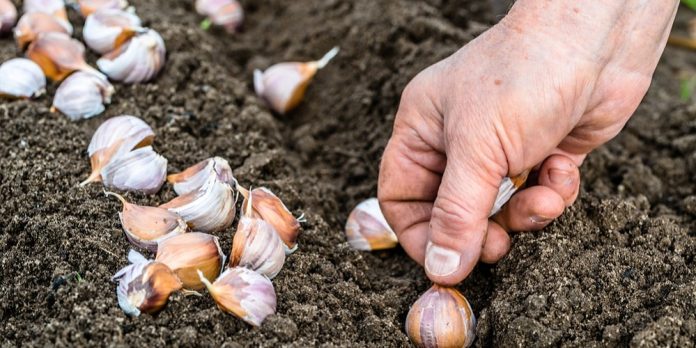Planting fall garlic is not only simple and easy to do, it can also set you up to grow an amazing harvest of some of the biggest and most delicious garlic you’ll ever harvest next summer!
Although garlic can be planted in the spring or fall, fall planting allows bulbs more time to grow larger. But even more than that – it also allows the garlic to develop far more taste. Why? Because by having time to overwinter in cool soil, garlic bulbs intensify their flavor.
When planted early in the fall, garlic bulbs have time to set their roots and begin to develop their flavor profile. And when the cold weather arrives and winter sets in, instead of dying off, the bulbs go dormant – all the while continuing to develop more and more flavor.
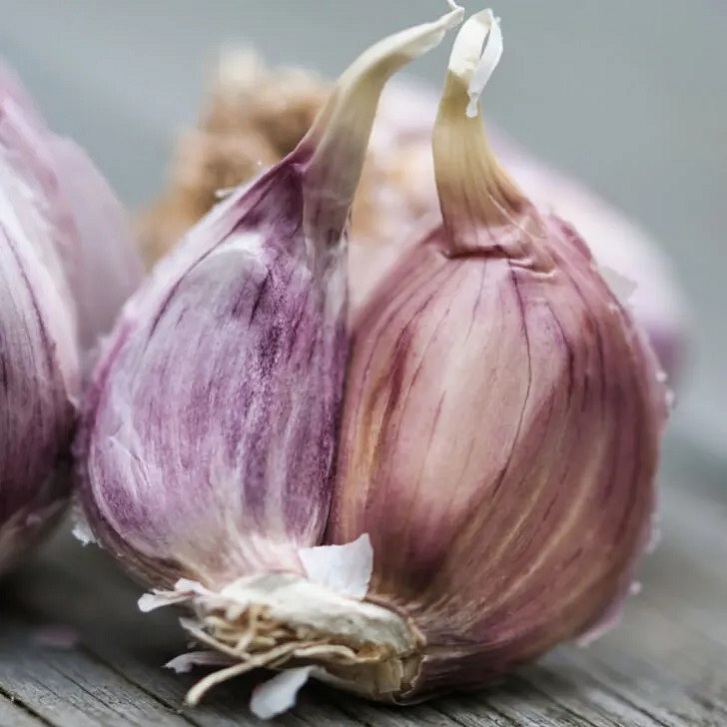
When spring arrives and the soil begins to warm, the garlic comes alive once again. And as it continues to grow throughout the spring and early summer, it increases in both size and taste even more – right up until it begins to die off in mid-summer for harvest.
So how easy is it to plant garlic successfully in the fall? It’s honestly more simple than you could ever imagine! In fact, by following the four simple tips and tricks below – you can all but ensure an amazing harvest next summer.
Planting Fall Garlic – 6 Simple Secrets To Grow Great Garlic
1. Plant The Right Type Of Garlic For Your Climate
There are two main types of garlic, softneck and hardneck. Both are certainly tasty and delicious, but each has their own unique characteristics. Especially when it comes to knowing which type of garlic you can grow based upon where you live.
Softneck varieties grow best in warm, mild climates. You can plant softneck in the spring or fall, but it is far less hardy than hardneck. Therefore, if you have any kind of a winter – softneck garlic is not a good option for fall planting.
Hardneck garlic on the other hand is perfect for fall planting in climates with cold winters. It will not freeze out in the cold winter but instead go dormant, coming back to life in the spring.
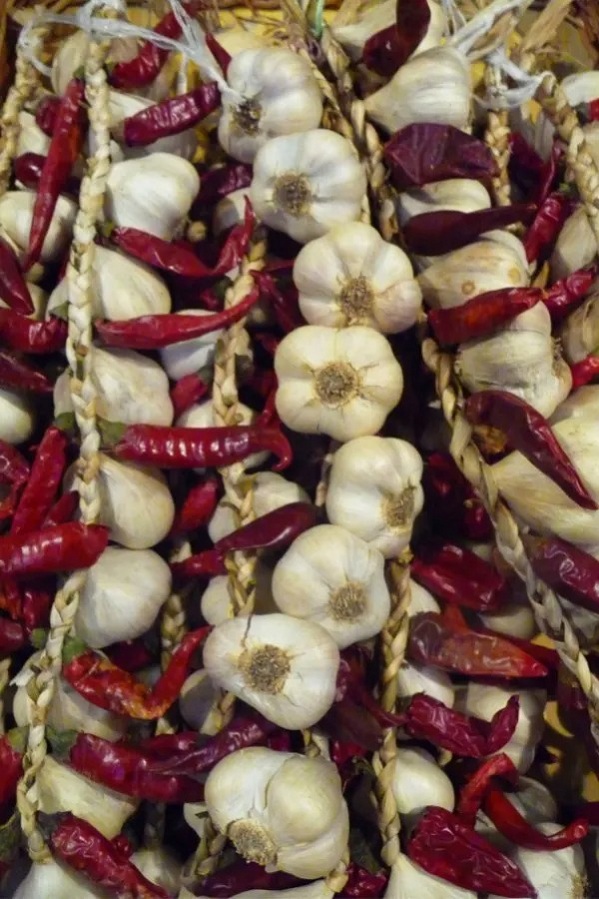
As for characteristics of each type, softneck garlic tends to be smaller, but stores extremely well, often for up to a year or more. Although hardneck does not store quite as long, its cloves tend to be larger and more flavorful than softneck. It will still keep for up to 6 months when properly stored.
2. Plant At The Right Time – Planting Fall Garlic
The best time for planting garlic is in early fall. When to plant all depends on where you live, and how soon winter will arrive.
Hardneck garlic sprouts in the fall and will grow until the first frost. Much like planting fall onions, hardneck garlic needs to have at least four to six weeks of growth before the first hard frost hits.
This allows time for the cloves to germinate and establish in the soil before going dormant through the winter months. Making sure hardneck garlic has enough time to establish roots is vital to its health and success.
If not enough roots grow before winter arrives, it can leave it vulnerable to freezing out over winter. In addition, little root growth in the fall will also lead to smaller bulbs during the next year’s summer harvest.
For best results, plant your hardneck garlic about 6 to 8 weeks before your area’s expected first frost date. This allows plenty of time for the garlic to set and grow even if there is an early frost. For softneck, it is best to get your garlic in the ground in late fall before the cooler winter weather arrives.
3. Buy Good Seed Stock – Planting Fall Garlic
There are several options for purchasing garlic bulbs for planting. Many local nurseries, greenhouses and seed stores will carry hardneck and softneck garlic for planting. You can also purchase locally-grown garlic (must be organic and untreated) at a farmers market to use as your initial seed.
In addition, there are many on-line nurseries and seed stores that carry a wide selection of hardneck garlic bulbs for planting as well:
What about using garlic bulbs in a grocery store? It is actually best to avoid “grocery-store” garlic. Quite often, these bulbs are shipped from distant locations and countries and may not perform well. Even more, many of the cloves are often treated with pesticides and fungicides which can inhibit sprouting.
What about using garlic bulbs in a grocery store? It is actually best to avoid “grocery-store” garlic. Quite often, these bulbs are shipped from distant locations and countries and may not perform well. Even more, many of the cloves are often treated with pesticides and fungicides which can inhibit sprouting.
4. Soak Your Cloves – How To Plant Hardneck Garlic
One of the best way to ensure sprouting success is by soaking your cloves before planting. Soaking the cloves overnight in water and baking soda will help to speed germination by hydrating the cloves.
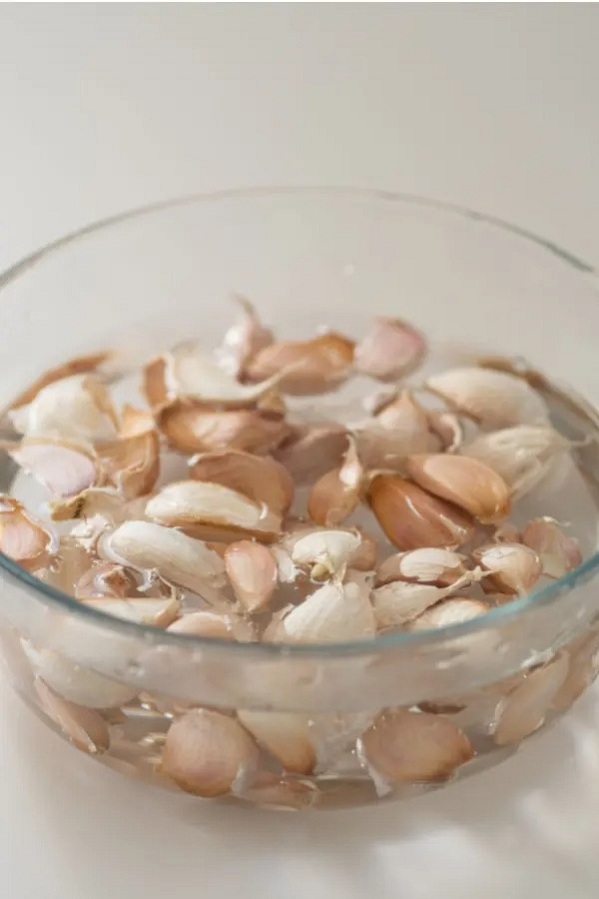
Each individual clove of a garlic head is a seed. To prepare the cloves for soaking, separate each clove carefully, keeping as much of the paper skin in tact as possible. The outer paper casing protects the seed in the soil. By keeping as much of the papery skin in tact, it helps prevent against rot and damage.
Fill a bowl or bucket with enough fresh water to cover your garlic bulbs. Be sure to use well water or distilled water and not city or treated water. Water that has been treated often contains chlorine, salt and other chemicals that will hinder germination.
Before adding in the garlic, mix in a teaspoon of baking soda to the water. This can increase germination rates and protect the crop against rot and disease. Soak the cloves overnight or for at least 12 hours before planting.
5. Soil Preparation – Planting Fall Garlic
You can plant garlic in raised beds, raised rows, or in a traditional garden set up. But no matter where you grow, it’s vital to have fertile, well-draining soil. And the best way to provide that is with ample compost at planting time.
Plant garlic using the trench method. Begin by creating a trench 3 to 4 inches deep and a few inches wide. Next, fill the trench half-way up with compost. If you don’t have compost on hand, you can use a good potting soil mix to put in the trench.
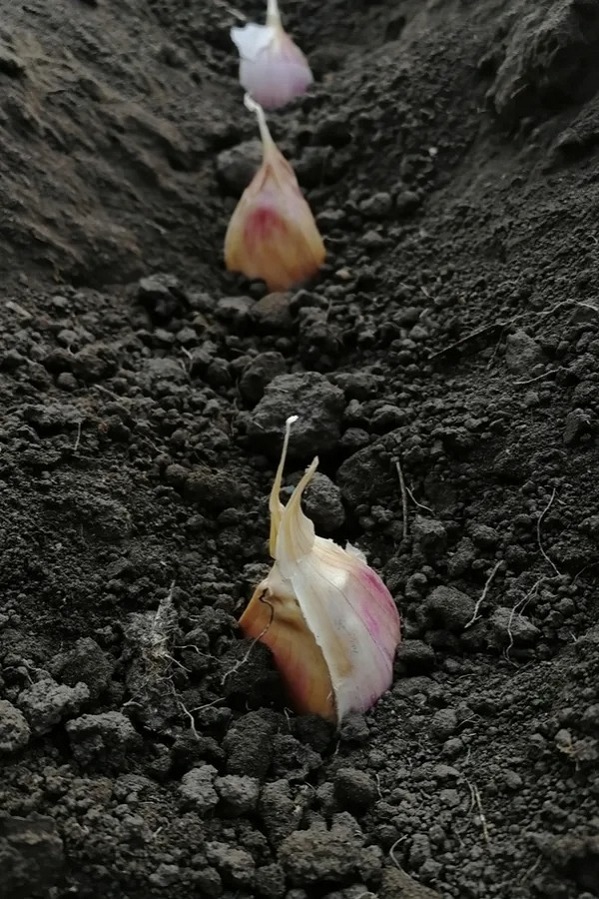
The compost (or potting soil) in the trench provides plenty of loose, fertile soil for the garlic to grow in. Plant each bulb down into the compost layer with the pointy end of the garlic clove facing up. This is where the garlic will sprout and makes shooting through the soil fast and easy for the bulb.
Cover the tips of the garlic with a few inches of soil, level to the surface of the surrounding soil. For multiple rows, space garlic about four to six inches apart. Water at the time of planting and every four to five days if rain is not falling on your crop.
6. Keep Weeds Out – Planting Fall Garlic
If there is one thing that can hold your crop back from big bulbs and large yields, it is weeds. Weeds compete for the same nutrients as the garlic bulbs do. By eliminating weeds you allow all of the energy to go towards creating bigger and tastier bulbs.
The best way to keep weeds at bay is with mulch. As soon as you plant your garlic, cover it with a few inches of straw or shredded leaves. This will keep weed seeds from blowing in. Even more, it will also help keep moisture in the ground to help bulbs sprout and grow.
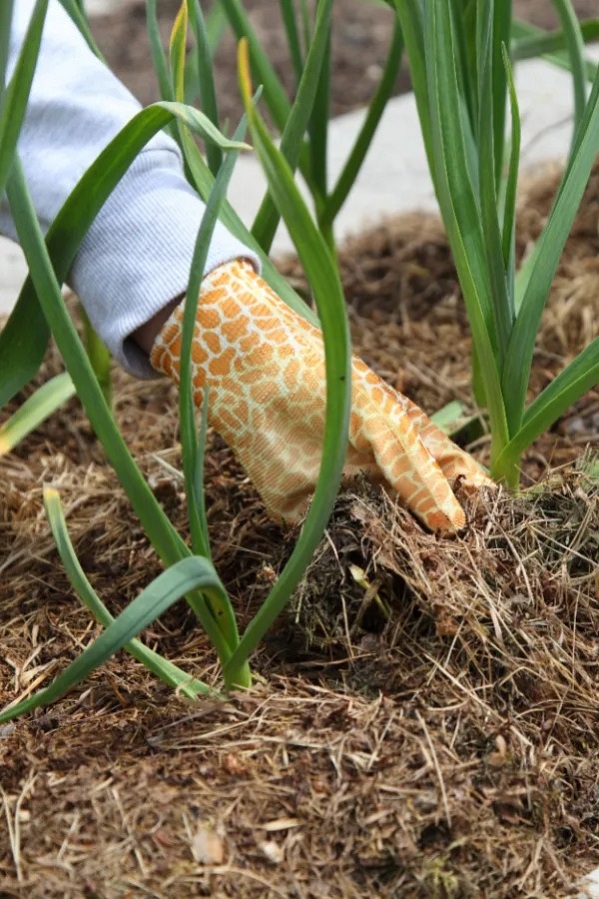
Once the crop germinates add a few more additional inches of mulch to insulate it through winter. Garlic requires very little additional care and it truly is one of the easiest of crops to maintain.
It will go dormant in the winter months once a few frosts or a hard freeze occurs. For softneck garlic in warmer climates, it will slow or even go dormant as well. The plants will then spring back to life as warmer temperatures return early in the spring.
Harvesting – Planting Fall Garlic
Garlic is ready to harvest when the tops and foliage brown off. For most regions, this occurs somewhere between late June and late July.
One final hint – keep the best of your bulbs in a cool dark place to replant in the fall. The more you can replant your own garlic seed, the better it will grow year after year. Here is to planting fall garlic this year – and to a great harvest of tasty bulbs next summer!

